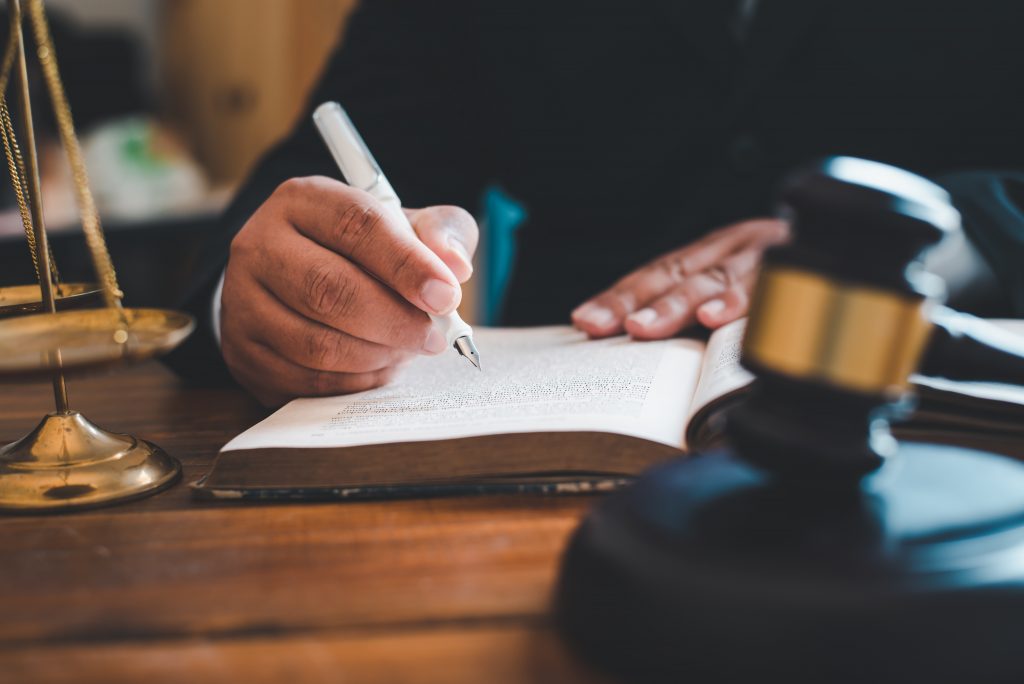The probate process is a legal proceeding that takes place after the death of an individual. It involves the distribution of their assets and the resolution of any outstanding debts or claims. Understanding the probate process is essential for individuals who are personally responsible for administering the estate of a deceased person, commonly referred to as the personal representative. This comprehensive legal process encompasses various aspects, such as handling real estate, bank accounts, life insurance policies, retirement accounts, and other probate assets. Additionally, it involves addressing estate taxes, notifying creditors, and distributing assets to beneficiaries according to the deceased individual’s estate plan or will. By gaining an understanding of the probate process, individuals can navigate the legal proceedings with clarity and confidence, ensuring a smooth and efficient resolution of the deceased person’s estate.
What is Probate?
Probate is a court-supervised process that authenticates a deceased person’s will, identifies the executor, assesses the deceased person’s assets, pays any outstanding taxes and debts, and ultimately distributes the remaining estate to the beneficiaries.
The probate process starts by submitting a petition to the court to initiate probate. Typically, this is done by the personal representative designated in the will or appointed by the court in the absence of a will. The court then verifies the will and formally appoints the executor to fulfill the deceased individual’s desires.
Next, the executor is responsible for identifying and assessing the deceased person’s assets, including real estate, bank accounts, retirement accounts, life insurance policies, and personal property. The executor must also provide notice to creditors so that any outstanding debts can be paid from the estate.
If there is no will, the court becomes responsible for making decisions about the distribution of the deceased person’s assets, which can potentially complicate the process.
Once all debts, taxes, and expenses are paid, the remaining estate is distributed to the beneficiaries according to the deceased person’s wishes or estate law if there is no will.
In conclusion, probate is a court-supervised proceeding that involves authenticating the will, assessing the deceased person’s assets, paying taxes and debts, and distributing the remaining estate to the beneficiaries. Whether there is a will or not, probate ensures that the deceased person’s wishes are carried out in an organized and legal manner.

Who is the Executor or Administrator?
A personal representative, also known as an executor or administrator, is an individual appointed to manage and administer the probate process and the deceased person’s estate. The personal representative can be nominated in the deceased person’s will or appointed by the court if there is no will.
In the case of a person who died with a will, the individual named as the personal representative in the will usually takes on this role. However, if the nominated personal representative is unable or unwilling to serve, or if there is no named personal representative in the will, the court will appoint someone else.
When an individual dies without a will, the probate court typically follows a predetermined order to appoint a personal representative. The surviving spouse of the deceased person usually has the priority to serve as the personal representative. If there is no surviving spouse, the court may appoint an heir or another interested party who is willing to take on the responsibilities.
It’s important to note that the appointment of a personal representative is subject to court approval. The court evaluates the qualifications and suitability of the individual and ensures they are capable of fulfilling their duties and responsibilities in the estate administration process.
Overall, the appointment process for a personal representative varies depending on whether the deceased person has a will or not. The priority for appointment is typically given to the person named in the will, followed by the surviving spouse and then other heirs or interested parties if necessary.
The Legal Process of Probate
The legal process of probate begins with the opening of an estate. This typically involves filing a petition with the probate court in the county where the deceased person resided. The petition requests the court’s approval to appoint a personal representative to oversee the administration of the estate.
If the deceased person had a will, the court will require proof of its validity. This may involve presenting the original will to the court or providing witnesses who can testify to its authenticity. If the will is deemed valid, the court will proceed with appointing the nominated personal representative.
The court plays a supervisory role throughout the probate process. It ensures that the personal representative carries out their duties and responsibilities by the law and the terms of the will, if applicable. The court also oversees the distribution of assets to the beneficiaries named in the will or, in the absence of a will, to the legal heirs as determined by state law.
Before asset distribution occurs, the personal representative must fulfill various other obligations. These may include identifying and collecting the deceased person’s assets, paying outstanding debts and taxes, notifying creditors, and handling any claims or disputes that arise. The court’s involvement helps to protect the rights of all interested parties and ensures a fair and orderly distribution of assets.
Real Estate and Bank Accounts
During the probate process, real estate and bank accounts are handled by the law and the terms of the deceased person’s will. These assets, along with others such as vehicles, investments, and cash, are considered probate assets and are subject to distribution by the probate court.
When it comes to bank accounts, various types are included in the probate process, such as checking and savings accounts. The personal representative, who is responsible for managing the deceased person’s estate, must provide a valuation of these accounts to the court. This valuation helps determine the overall value of the estate and ensures that the assets are distributed appropriately.
Similarly, when it comes to real estate, the court takes into account the value of the property and includes it in the overall estate valuation. The personal representative may need to obtain appraisals or property evaluations to determine the fair market value of the real estate.
Ultimately, both real estate and bank accounts are important assets that need to be accounted for and handled properly during the probate process. The involvement of the court helps ensure a fair distribution of these assets to the beneficiaries or legal heirs as determined by the law and the terms of the will.

Notice to Creditors
In the probate process, one crucial step is providing notice to creditors. The personal representative of the deceased person’s estate is responsible for giving notice to creditors that they have a limited time to make claims against the estate.
To provide notice, the personal representative typically publishes a notice in the local newspaper where the deceased person resides. This publication serves as a public announcement and informs creditors that they should submit their claims within a specific timeframe.
Additionally, the personal representative may also be required to send individual letters to known creditors. This ensures that all potential creditors are notified of the probate proceeding.
Creditors are given a certain timeframe, usually three or four months from the date of the notice publication or the receipt of the letter, to submit their claims. This allows them sufficient time to come forward and make a claim against the estate for any debts owed to them by the deceased person.
Providing notice to creditors is a crucial step in the probate process as it allows all parties involved to handle outstanding debts appropriately and ensure a fair distribution of the deceased person’s assets.
Distribution of Assets
In the probate process, the distribution of assets is a crucial step that involves transferring the deeds and titles of properties to beneficiaries as stated in the will or directed by the court. This ensures that the deceased person’s assets are distributed according to their wishes or the legal provisions.
However, distributing the remaining assets can pose potential challenges and may take some time to complete. One challenge is identifying and locating all beneficiaries, especially if the deceased person has not provided a detailed list or if there are disputes among potential heirs. Resolving any conflicts or legal issues can further delay the distribution process.
To start the distribution, the personal representative is responsible for paying off the deceased person’s outstanding debts. This includes settling any unpaid taxes, credit card bills, and other financial obligations. Closing bank accounts, canceling credit cards, and finalizing any other financial matters are also part of this process.
Additionally, selling assets such as real estate, vehicles, or other valuable items may be necessary to generate cash to cover debts or to distribute the proceeds among beneficiaries.
The time frame for completing the distribution of assets can vary depending on the complexity of the estate and the presence of any disputes or legal proceedings. In some cases, it can take several months or even years to fully distribute all the assets and close the probate process.
Overall, the distribution of assets in the probate process involves transferring deeds and titles to beneficiaries, addressing any challenges that arise, and following a prescribed series of steps to ensure a fair and orderly distribution of the deceased person’s estate.

Conclusion
In conclusion, the probate process is reached when all necessary steps have been taken to distribute the assets of the deceased person’s estate to the rightful beneficiaries. This includes settling any outstanding debts, taxes, and administrative expenses.

